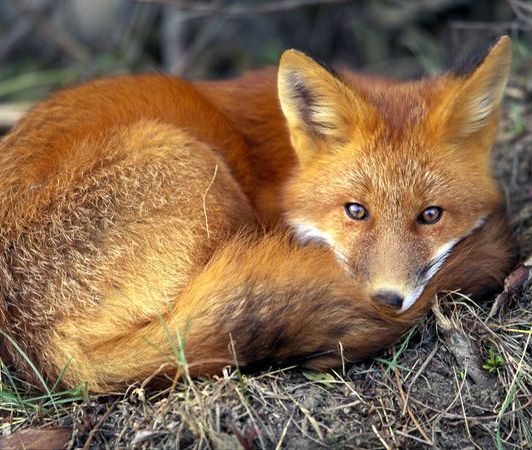
Red fox (Vulpes vulpes)
Phylum —chordata
Class — mammalia
Order — carnivora
Family — canidae
Genus – vulpes
Appearance
The Red fox has a reddish brown coat sprinkled with light-tipped hairs. The chest and underside of the neck are white. Distinguishing marks include black ears and feet and a white-tipped tail.
The Red fox is 24 to 28 inches long, not including the tail, which measures an additional 14-17 inches. Red foxes average 8-12 pounds in weight, but often appear heavier than this due to their thick coats.
Habitat
Red foxes live in many different habitat around the world including forests, grasslands, deserts and mountains, having the greatest geographic range of all members of the Carnivora family.
Behavior
Red foxes live in family groups sharing a joint territory. Adults have a home range that varies in size according to the quality of the environment. In rich areas they may measure 5 to 12 square kilometers, being larger in poorer areas, from 20 to 50 square kilometers. Occupants of a range are an adult male, and one or two females with their young. Families and individuals live in dens made of earth and often have emergency burrows within the home range. Often the same den is used over several generations.
Diet
Red foxes are omnivores and eat a highly varied diet. They feed mostly on small rodents such as voles, mice, hamsters, ground squirrels, gerbils, woodchucks, deer mice and pocket gophers. They also eat birds, rabbits, porcupines, hares, raccoons, opossums, insects and small reptiles.
Reproduction
Mating is from January to March. The female builds one or more dens following mating. The spare dens can be used if the original one is disturbed. Gestation is about two months and then 1 to 10 kits are born. The male supplies the female with food while she looks after the kits. At about a month old the kits begin to play outside the den. The mother feeds them regurgitated food and later brings them live prey which they "play" with before eating, which helps develop skills for hunting. At about 7 months old the kits leave the mother.
While red foxes can live up to 15 years in a zoological setting, their lifespan in the wild is substantially shorter – at about three years.
In captivity
The Red fox is not as popular as a fennec fox for a pet, but those who have them say that they are as sweet as house cats. They are not domesticated and have a few drawbacks. Perhaps their worst offense is that they have the smelliest urine of the fox breeds. Spaying or neutering may help reduce the odor a little bit. They also have a propensity to dig and need much more room to dig and play than other breeds.
 Russian
Russian
 English
English
























